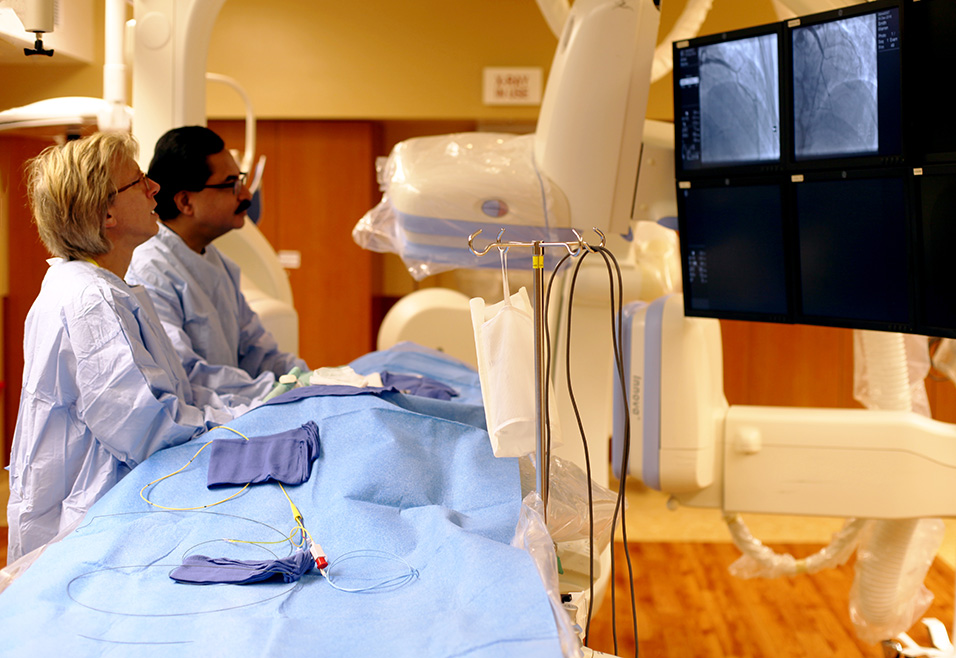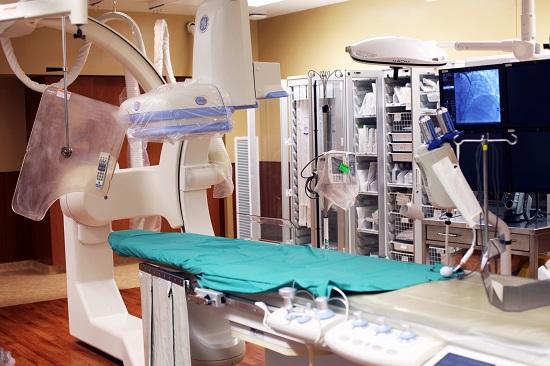Veterans Health Administration
Helping Hands for Healthy Hearts for PA Veterans

Richard Weaver, Registered Cardiac Invasive Specialist and Dr. Izzat Shah, M.D. (back) provide Veterans advanced cardiac catheterization care at the Wilkes-Barre VA Medical Center.
Cardiac catheterization is a procedure that examines how well the heart is working. A thin, hollow tube called a catheter is inserted into a large blood vessel leading to the heart. The results of the procedure tell doctors if patients have diseases of the heart muscle, valves or coronary arteries.
Wilkes-Barre’s team of cardiologists, nurses, and technologists is skilled in all aspects of catheterization care. They understand procedures involving the heart can be particularly stressful, and do all they can to address and alleviate Veterans’ concerns.
At the medical center, cardiac catheterizations are performed in a state-of-the-art suite. The suite is equipped with the latest technology, including biplane imaging (which allows doctors to follow the path of blood through blood vessels and create a roadmap for reaching and treating the precise location of problems) and three-dimensional mapping.

Wilkes-Barre’s Cardiac Catheterization Suite features state-of-the-art biplane imaging and three-dimensional mapping capability.
In cardiac catheterization, the catheter can be inserted into either the radial artery in the wrist or the femoral artery in the groin area. The vast majority of catheterization procedures done at Wilkes-Barre today are radial catheterizations, in which a flexible catheter is inserted into the wrist.
Benefits of the radial process, compared to femoral catheterizations, include a reduced risk of bleeding, getting people on their feet more quickly, and increased comfort. Veterans who undergo radial catheterizations are usually done two hours after the procedure is completed. In Wilkes-Barre, they spend the two hours in the catheterization lab recovery room, relaxing in heated massage recliners.
Every year, the cardiac catheterization team treats more and more Wilkes-Barre-area Veterans, so patients no longer need to travel to VA medical centers in Philadelphia and New York for care. This means that they no longer have to face invasive procedures in unfamiliar settings, without loved ones by their side.
The cardiac catheterization team, and the new lab, is another demonstration of how Wilkes-Barre improves the Veteran experience by using the latest medical technology to produce the best possible outcome for Veterans.



















